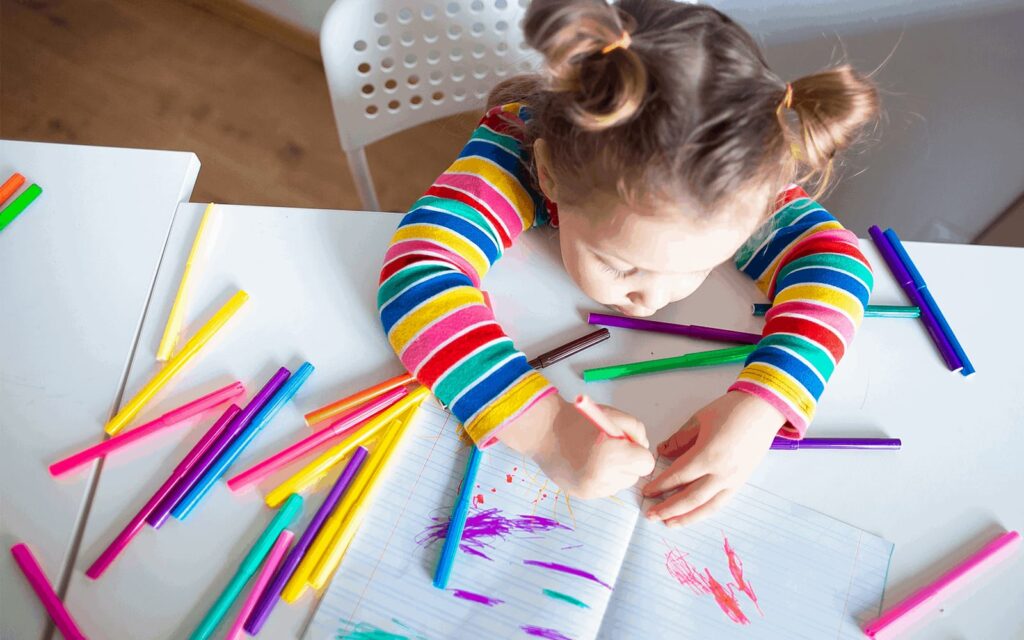1. The Therapeutic Power of Art

Engaging in painting or drawing is like taking a deep breath for your soul. The act of creating can:
- Reduce Stress: The gentle movement of a brush or pencil calms your mind. Studies show that 45 minutes of creative activity can significantly lower cortisol, the stress hormone.
- Enhance Focus: As you immerse yourself in your artwork, your mind becomes present, pushing aside worries and distractions. This meditative state fosters mindfulness.
- Improve Emotional Regulation: Art provides a safe space to process complex feelings like sadness, anger, or joy. As you mix colors and shape forms, you give these emotions an outlet, reducing their intensity.
2. How Painting and Drawing Foster Self-Expression
Sometimes, words fail us, my dear. But a splash of color or a bold stroke can convey what lies deep within. Painting and drawing empower you to:
- Tell Your Story: Whether it’s through abstract designs or realistic portraits, your art becomes a reflection of your personal journey.
- Connect with Yourself: As you create, you’ll notice patterns in your work that mirror your thoughts and feelings. It’s like holding a mirror to your inner world.
- Communicate Without Fear: In art, there is no right or wrong. This freedom encourages you to express yourself without the fear of judgment.
- 3. Building Emotional Resilience Through Art
- Life, my child, is full of storms, but painting and drawing can help you weather them. Here’s how:
- Channeling Negativity: Instead of bottling up your anger or frustration, pour it into bold strokes and fiery hues. Let the canvas absorb your pain.
- Finding Joy in Small Moments: Art teaches you to appreciate details—the way light dances on water or the subtle curves of a leaf. This shift in focus can spark gratitude and contentment.
- Strengthening Patience and Perseverance: As you refine your skills, you’ll learn to embrace mistakes and see them as stepping stones, building resilience in both art and life.
- 4. Simple Steps to Start Your Artistic Journey
- You don’t need expensive tools or formal training to begin. Here’s how you can take your first steps:
- Gather Basic Supplies: Start with a sketchpad, pencils, and a set of paints. Even a humble notebook will do.
- Create a Dedicated Space: Set up a quiet corner where you can paint or draw without interruptions.
- Experiment Freely: Don’t worry about creating a masterpiece. Try doodling, mixing colors, or mimicking nature. Focus on the process, not the outcome.
- Set Aside Time: Dedicate at least 15-30 minutes daily to your art. Consistency matters more than duration.
- 5. Exploring Different Styles and Mediums
- Like the spices in my kitchen, each art medium brings its unique flavor. Explore different styles to discover what resonates with your soul:
- Watercolors: Perfect for soft, flowing designs that mirror the fluidity of emotions.
- Acrylics: Bold and vibrant, these paints are ideal for expressing high energy and passion.
- Charcoal and Pencil: These are excellent for capturing raw, intricate details, adding depth to your work.
- Mixed Media: Combine materials like paper, fabric, or digital elements to create layered pieces rich in texture and meaning
- 6. Sharing Your Art and Building Connections
- Art is deeply personal, but sharing it can be a powerful way to connect with others. Join art groups, attend workshops, or even post your creations online. These interactions not only provide inspiration but also foster a sense of community and belonging. Remember, your art may inspire someone else to begin their healing journey.
- 7. Practical Benefits Beyond Emotional Balance
- While emotional well-being is the heart of art, painting and drawing also offer practical advantages:
- Enhances Problem-Solving Skills: Creating art involves decisions about colors, composition, and technique, honing your analytical abilities.
- Boosts Memory and Creativity: Regular practice improves your brain’s plasticity, enhancing your ability to think outside the box.
- Career Opportunities: If art becomes your passion, you can explore careers in illustration, graphic design, or art therapy.
- Q&A Section
- Ques 1: I’m not naturally talented at drawing. Can I still benefit from it?
- Ans: Absolutely, my dear! Art isn’t about talent; it’s about expression. Even simple doodles or abstract forms can bring immense emotional relief and joy.
- Ques 2: What if I don’t have time for art?
- Ans: Begin small. Even five minutes a day can make a difference. Keep a sketchbook handy and draw whenever you find a moment.
- Ques 3: Can painting help with anxiety?
- Ans: Yes, painting induces a state of flow that calms the mind and reduces anxiety. The rhythmic motion of your hand and the focus required act as a form of meditation.
- Ques 4: How can I involve my family in art?
- Ans: Organize family art nights where everyone creates something together. This fosters bonding and brings joy to all.